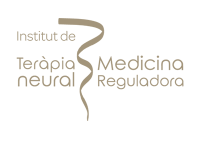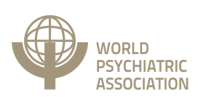How To Prevent Bruising After Botox
13 Minutes
Botox is a cosmetic injectable medication that paralyzes muscles temporarily. It employs onobotulinumtoxin A, a neurotoxic substance synthesized by Clostridium botulinum bacterium. The toxin induces botulism poisoning at high doses. Botulism is a severe form of muscle paralysis linked to contaminated foods.
Injections of Botox are regarded as safe. The injection employs a diluted dose of botulinum toxin to prevent muscles from contracting, thereby softening and relaxing wrinkles.
The vast majority of individuals use Botox to decrease face wrinkles. It is also utilized to treat the following conditions:
- Recurrent migraine
- Overactive bladder
- Hyperhidrosis (excessive sweating)
- Lazy eye
- Cervicomuscular dystonia (neck spasms)
Botox is, strictly speaking, the registered trademark of a medicine. Other forms of botulinum toxin type A injections, such as Xeomin and Dysport, are marketed under various brand names.
The follow-up for these medications is comparable. This article relates to all injections of botulinum toxin as “Botox.”
Whenever a subcutaneous injection is administered, bruising is a probable adverse effect. However, Botox administration does not always result in bruising; in fact, the vast majority of individuals do not develop botox injection bruises after treatment.
So why do certain individuals suffer from bruising? Bruising is a risk or side effect of Botox treatment since bruising is induced when blood vessels underneath the skin are ruptured, and even a highly experienced physician can occasionally do this by puncturing blood vessels (the vessels are sometimes hard to visualize) with needles used for your Botox injections. Using a thinner needle decreases, but does not eliminate, the likelihood of this happening.
Blood efflux, or blood seeping from a blood artery into the surrounding tissue, is the cause of Botox bruise. This may occur if the Botox needle punctures the blood vessel by accident.
Other reasons for blood extravasation include:
- Taking blood-thinning drugs and vitamins prior to botox treatment
- Alcohol consumption before or after a surgical operation
- Immediately exercising prior to or after the treatment
If you will experience bruising as a result of your Botox treatment, it will often emerge within 1 to 2 days. Occasionally, however, it might take up to three days for the botox injection bruises to travel to the surface of the skin. This is less common than acute bruising, but it can occasionally occur (and there’s no need to worry if it occurs to you).
If you are worried about acquiring bruises after Botox, there are steps you can take to lessen the likelihood of this happening. Aspirin, naproxen, and ibuprofen, for example, all raise your risk of Botox and filler bruising, so skipping these medications (with the consultation of your doctor) in the weeks preceding your treatment will reduce your risk of bruising. Icing and applying pressure to the injection sites prior to and after the procedure can also prevent bruising.
As previously said, bruising remains a possibility with injectable therapies. Fortunately, it’s much more likely that you won’t acquire bruises after Botox, and if you do, they’ll disappear within a few days, whereas the Botox will persist for months!
Usually, when you hit an object, the body forms blood clots to halt the bleeding and prevent bruising. However, sometimes the blood is unable to clot properly. When this occurs, you may find that you are susceptible to Botox and filler bruising.
Bruising is more prevalent in elderly persons. It’s because, as you age, your skin becomes thinner. Additionally, as you age, you lose a portion of the fatty layer in the skin that protects the blood vessels from harm.
Genetics has a part in an individual’s vulnerability to sustaining a bruise. There are a few additional preventable factors. These consist of:
- Heavy exercise immediately before or after receiving an injection
- Excessive alcohol consumption
- Use of anticoagulants
- Systemic inflammatory disease
- Disorders of blood
By and large, if you bruise easily, it is often the result of drugs, a medical condition, or a vitamin imbalance or deficit. Watch out for the causes of easy bruising. If you have any of these, it’s recommended to consult your doctor before getting Botox. These causes are discussed in further depth below.
Medications
Some medications can impair your body’s capacity to form blood clots, which could also increase your susceptibility to botox bruising around the eyes and other parts of the body. The following medications are known to impair your blood’s clotting ability:
Blood-thinning medications. These drugs are frequently used to prevent heart attacks and strokes. If you have deep vein thrombosis, atrial fibrillation, pulmonary embolism, or a recently implanted heart stent, your healthcare professional may also give these medications. Examples of such medicines include:
- Clopidogrel
- Warfarin
- Apixaban
- Rivaroxaban
Nonsteroidal anti-inflammatory medications (NSAIDs). These drugs are frequently employed as pain relievers. Unlike other pain medicines like acetaminophen, non-steroidal anti-inflammatory drugs also reduce inflammation-induced edema. Long-term usage of certain medications can cause an increase in bleeding. Typical NSAIDs include:
- Aspirin
- Naproxen
- Ibuprofen
- Celecoxib
Steroids. Some steroid drugs can make you more susceptible to bruising. This is especially true for topical corticosteroids, which may cause skin thinning. Topical corticosteroids are frequently used to treat eczema and other skin disorders. Steroids can be administered orally for asthma, severe colds, and allergies.
Herbs and dietary supplements. Certain plants and nutritional additives are thought to affect the body’s capacity to clot and may cause easy bruising, although proof of such adverse effects is scarce in the medical literature. Some instances include:
- Garlic
- Fish oil
- Ginkgo
- Saw palmetto
- St. John’s wort
- Ginseng
If you observe an increase in bruising, you should not stop taking your prescriptions. Instead, consult your physician about this concern.
Also, ensure that your doctor or other healthcare practitioner is aware of any supplements or herbs you are taking, as these may alter your blood’s capacity to clot, particularly if your physician prescribes blood-thinning or steroid medicines.
Medical Conditions
If you are prone to bruising, your failure to form blood clots may be the consequence of a medical problem. Good nutrition, healthy bone marrow, and a functioning liver are needed for the production of blood clots. If any of these conditions are significantly off, Botox bruising around the eyes and other skin regions is more likely to occur.
The following medical disorders can induce easy bruising:
Hemophilia type A. This genetic disorder is also referred to as classical hemophilia or factor VIII deficiency. It is induced by a clotting protein, factor VIII that is absent or faulty. With hemophilia A, it is difficult for the blood to clot, which can lead to bruising after Botox. This uncommon disorder can be severe. It is incurable yet treatable.
Hemophilia type B. With hemophilia B, often known as “Christmas illness,” the body generates little to no factor IX, a protein that aids in blood clotting. This might result in spontaneous or prolonged bleeding, which makes it easy for bruises to grow beneath the skin.
Von Willebrand disease. This disease is caused by a genetic change that leads to a lack of the von Willebrand factor protein (VWF). This protein facilitates blood clotting.
A low amount of platelets. Platelets are a form of blood cells that cluster together to stop bleeding by forming clots. When there are insufficient platelets in the blood, serious bleeding can result. Your platelet count may be affected by chemotherapeutic agents, radiation, or harmful substances. Certain diseases, such as the following, may also alter your platelet count:
- Leukemia
- Aplastic anemia
- Cirrhosis of the liver
- Myelodysplasia
Cushing’s syndrome. Also referred to as hypercortisolism, Cushing syndrome is a disorder characterized by unusually elevated cortisol levels in the body. Among the probable signs is skin that is prone to bruising.
Ehlers-Danlos syndrome (EDS). This condition comprises a spectrum of hereditary illnesses that affect connective tissue, including the skin, blood vessel walls, and joints. Due to the fragility of the blood vessels, skin, and connective tissue surrounding the blood vessels, bruising is common.
Vitamin deficiency. Deficiencies in blood-clotting vitamins, like vitamin C and vitamin K, may also lead to easy bruising. Malnutrition can raise the likelihood of being low in essential nutrients and vitamins. Your health professional can arrange a blood test to detect vitamin deficits and, based on the results, may prescribe vitamin supplements.
There are numerous strategies to avoid or decrease post-Botox bruising. They are all cost-free or inexpensive and simple to use.
Consult an expert healthcare provider
It is essential to visit a specialist for injectable treatment. In addition to ensuring that you get the best outcomes, a trained injector will also reduce bruising and inflammation to the greatest extent possible.
Look for a service provider with background and training, years of work experience, a showcase of work, and digital or word-of-mouth recommendations. Additionally, you must make an appointment with your injector before the treatment.
Get a comprehensive consultation
The expert injectors will take the time to know about your skin and desired outcomes. During your appointment, experts will analyze your skin and determine the most effective treatment and approach for your specific needs and objectives. They will also address any concerns you may have and review any pre- and post-care guidelines.
The majority of the information below is covered in these sessions, however, we want to ensure that everyone has access to it! Continue reading to discover how to prevent bruises after Botox treatment.
Do not take certain supplements before Botox
Vitamin and herbal supplements available over-the-counter that alter clotting time may cause bruising following Botox. Fish oils, St. John’s wort, ginkgo Biloba, high-dose Vitamin E, omega-3 fatty acids, turmeric, and garlic are some of these supplements. It is advised that you discontinue their use 2 weeks prior to the surgery, and you should always consult your physician before doing so.
Some medications should not be used before and after treatment
After Botox, certain blood-thinning medications may cause bruising after Botox for the forehead region. These drugs include:
- Aspirin
- Warfarin
- Clopidogrel
- Heparin
- Naproxen and Ibuprofen
- Non-Vitamin K-dependent oral anticoagulants
You should not discontinue prescribed drugs without first visiting your physician. If your situation permits, your doctor will urge you to stop using your drugs one week before your Botox treatment.
Avoid using retinoids
Although retinoids do not usually cause bruising, you should refrain from using retinoid treatments on your skin for two days before and after injections. This will avoid inflammation during the healing process.
Avoid alcohol prior to and following treatment
Alcohol intake 24 hours prior to and after treatment raises the risk of bruising after Botox forehead or Botox to other regions of the body. Alcohol thins the blood and speeds up the clotting process.
Do not recline for at least four hours
Botox and filler require time to integrate into the tissues, therefore you should avoid lying down and maintain your head elevation for the first four hours following injections.
Do not massage the affected region for 12 hours
Touching or massaging the skin on and surrounding the site of injection for 12 hours after injection is prohibited. Rubbing the skin may dislodge the substance from its intended location before it has settled, which might negatively affect the outcome.
No skin treatments the day after Botox
There is nothing quite like a day at the spa for self-care, enjoyment, and to let your troubles melt away. However, if you wish your Botox shots to have sufficient time to integrate into your muscles, you should not schedule a spa day immediately following your Botox treatment.
Avoid procedures such as facials, exfoliating scrubs, dermal fillers, and face massages. There is a place and a time for these activities, but following Botox, your attention should be on healing at home and ensuring that your treatments are as successful as possible.
Avoid Exercising
Exercise boosts blood circulation and heart rate, which is the inverse of what you want before or after a Botox injection. Avoid strenuous physical activity two to three hours prior to and twenty-four hours after treatment.
It’s often said that prevention is better than cure. It’s best that you prevent bruising by the strategies mentioned above. However, if bruising occurs after Botox treatment, here is what you can do to manage it and speed up the recovery process.
Take Vitamin C
A lack of vitamin C may increase the likelihood of bruising following Botox. Increase your Vitamin C intake with supplements and meals rich in this antioxidant before and after the surgery. Included in this category are blackcurrants, broccoli, citrus fruits, and peppers.
Consider Using Anti-Bruising Treatment
If you are predisposed to bruising, using anti-bruising pills a few days prior to and after the treatment may assist in the healing of your blood vessels.
Arnica is a common natural treatment utilized by Botox patients. Take this supplement 3 to 4 days prior to your Botox treatment to reduce the risk of bruising, or as directed by your doctor.
Vitamin K reduces edema and bruising effectively. Consult your physician before taking any Vitamin K supplements. Take these 5 days prior to therapy, or as directed by your physician.
Bromelain pills are another alternative for preventing bruising. Bromelain is a pineapple-derived enzyme known to minimize edema. It is available in the majority of grocery and healthcare stores. Consult your physician for specific instructions on how to avoid bruising after Botox.
Utilize Ice Packs
Typically, ice packs are used to reduce swelling and bruising. The cold constricts blood vessels, decreasing blood flow to an injured area. Therefore, administering cold packs both before and after Botox reduces the likelihood of bruising. Before administering Botox, your doctor may use ice packs as a routine procedure. On the day of the surgery, you may use cold packs for 10 to 15 minutes per hour at home.
Use Tylenol if necessary
Everyone’s pain threshold is unique. Before your consultation, you can take Tylenol if necessary to reduce any pain. Many patients describe the injections as feeling similar to a pinprick, although some patients believe that fillers are somewhat more unpleasant than Botox since there is more tissue manipulation with fillers.
Elevation of the injected area
During the first few days following the treatment, sleep with your head elevated above your heart. This position decreases the chance of bruising and keeps blood from pooling.
FAQs
How Long Does Bruising Last After Injectables?
Bruising might occur immediately following injections, or one to two days later. In any situation, bruising often disappears within a few days. Occasionally, bruising might last up to a week.
Bruises typically seem dark purple or red at first. They might turn yellow before fading away. However, prospective patients must recognize that their situation may differ from that of other patients because everyone heals at a different rate.
The majority of bruising caused by Botox or dermal fillers can be easily concealed (hidden) with concealer.
How Often Do People Get Bruises After Getting Botox?
Bruising after botox is uncommon unless you have a predisposition to bruising or are on specific medications such as blood thinners or steroids like warfarin and aspirin.
When Botox is administered into a muscle, the needle can sometimes damage small subdermal blood vessels, resulting in bruising.
Can Botox Bruising Be Permanent?
A permanent bruise from Botox injections is rare, but if your bruise persists after 2 weeks, consult a physician. Some individuals with darker skin may develop post-inflammatory hyperpigmentation after certain operations, which can be mistaken for bruising, however, it is quite uncommon for Botox injections to induce this condition.
Warm compresses and the homeopathic medicine Arnica Montana, which is well-known for reducing swelling and bruising, are the only things that can be done to expedite recovery from a small bruise caused by an injectable medication. A bruise following an injection treatment is typical: 1) Infrequent; 2) Mild or moderate in severity 3) Of a brief duration 4) A modest size.
A small amount of ice before and after injections can help lessen the likelihood of bruising and minimize its appearance if it does occur. The yellow hue of a bruise might be caused by bilirubin, which is one of the metabolites of hemoglobin breakdown.
HOW SENSES CAN HELP WITH Aesthetics
Senses is a leading provider of luxury addiction and mental health treatment for affluent individuals and their families, offering a blend of innovative science and holistic methods with unparalleled individualised care.
A UNIQUE METHOD
successful and proven integrative holistic conceptOur program consists of treating only one client at a time individually designed to help you with all the problematic aspects of your life. All individual treatment sessions will be held at your private residence.
more infoYour program is designed based on your personal needs. The team will exchange daily information and adjust the schedule as we go. Our therapists will work with you treating integrative not just the symptoms and goes beyong your stay to ensure lasting success.
more infoOur biochemical imbalance can be affected by diet and stressful life events, but it often goes back to genetics and epigenetics. We do specific biochemical laboratory testing to determine an individual’s biochemical imbalance. Combining the results of the lab tests with anamnestic information and clinical tests, we prescribe an individualized and compounded vitamin, mineral, nutrient protocol to help recover from various disease states.
more infoOur experts combine the best from psychological treatment, holistic medicine to support you individually and providing complementary therapies all coordinated from one source working complementing each other integrative.
more infoUsing latest cutting-edge technology-based therapies such as Neurofeedback, tDCS, and SSP, we can track the biological patterns of your body, giving us valuable insight into your health and well-being as well support your brain and body performance and recovery with neuromodulation.
more infoOur chef and nutrition specialist will design your personalized diet plan supporting your body & mind recovery as well as helping with weight management. Nutrition workshops and mindful eating sessions will help you to maintain a healthy lifestyle.
more infoAesthetics TREATMENT LASTING APPROACH
0 Before
Send Request
0 Before
Define Treatment Goals
1 week
Assessments
1-4 week
Integrative Holistic Therapies
5-12 week
Aftercare
12+ week
Refresher Visit
Aesthetics Insights
latest news & research on AestheticsHow Long Until You Can Work out After Lip Fillers
Lip fillers are a wonderful method for achieving fuller, plumper lips. As with any treatment, the correct post lip filler care plan is essential to ensuring a positive experience and a speedy recovery
read moreHow To Prevent Bruising After Botox
However, Botox administration does not always result in bruising; in fact, the vast majority of individuals do not develop botox injection bruises after treatment.
read morePost Botox Care
If you would like to learn more about the things you should and shouldn't do after getting botox, continue reading as we're going to discuss what botox i
read moreAccreditations



























































